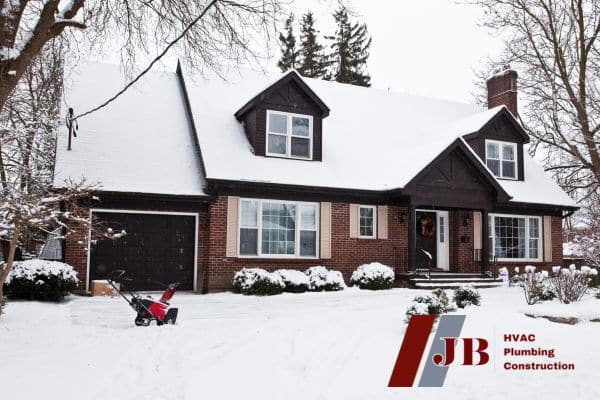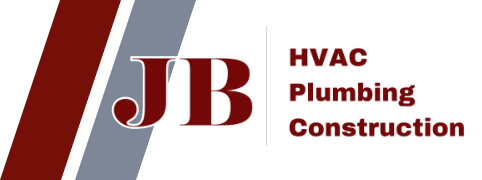
As temperatures begin to drop, protecting your home from winter's harsh elements becomes crucial. Learning how to properly winterize your home not only ensures your family's comfort but can also save you thousands in potential repair costs. In this comprehensive guide, we'll walk you through essential steps to prepare your home for the cold season ahead.
Why Winterizing Your Home Matters
Winter weather can cause significant damage to unprepared homes. Frozen pipes can lead to extensive water damage, while poor insulation results in skyrocketing heating bills. Ice dams can create structural damage, and improperly maintained appliances may fail when you need them most. Additionally, winter can impact your indoor air quality, making proper preparation essential for your family's health and comfort.
Essential Steps to Winterize Your Home
1. Gutter Maintenance: Your First Line of Defense
Your gutters play a crucial role in protecting your home's foundation. When leaves and debris clog your gutters, they can cause ice dams and water damage. Regular maintenance should include removing all leaves, twigs, and debris, checking for proper drainage, and ensuring downspouts direct water away from your foundation. Consider installing gutter guards for added protection.
2. Pipe Protection: Preventing Costly Water Damage
Frozen pipes can burst, causing extensive water damage. Protect your pipes by insulating exposed pipes in unheated areas and sealing gaps where pipes enter your home. Consider using heat tape for vulnerable areas. During extreme cold, keep cabinet doors open to allow warm air circulation around plumbing.
3. Smart Use of Ceiling Fans
Your ceiling fans can help reduce heating costs when used properly. Switch your fan direction to clockwise for winter operation and run at low speed to push warm air down. This simple change can reduce heating costs by up to 10 percent through improved air circulation.
4. Water Heater Maintenance
Your water heater works harder in winter, making maintenance crucial. Check for corrosion signs and inspect the burner area regularly. Set the temperature to 120°F for optimal efficiency. Older units may benefit from a water heater blanket for additional insulation.
5. Fireplace and Chimney Safety
Before lighting your first fire, schedule professional chimney cleaning and check for creosote buildup. Inspect the damper for proper operation and verify that your carbon monoxide detectors are working correctly. Professional inspection ensures safe operation throughout the winter.
6. Appliance Winterization
Protect your valuable appliances through proper winterization. If leaving for extended periods, drain water-containing appliances. Regular cleaning and maintenance of washing machines and dishwashers prevent winter issues. Check refrigerator seals for efficiency and consider professional maintenance for complex appliances.
7. Attic Insulation: Your Energy Saving Shield
Proper attic insulation is crucial for energy efficiency. Current recommendations suggest R-30 to R-60 insulation levels. Ensure proper ventilation and seal any air leaks or gaps. A professional inspection can identify areas needing additional insulation.
8. HVAC System Preparation
Prepare your heating system before heavy use begins. Replace or clean filters monthly and schedule professional maintenance. Clear all vents and returns, and test system operation before cold weather arrives. Regular maintenance extends system life and improves efficiency. Learn more about HVAC maintenance here.
9. Safety System Checks
Winter preparation must include safety system verification. Test all smoke detectors and replace batteries as needed. Check carbon monoxide detectors and review emergency plans with family members. Professional inspection ensures all systems function properly.
10. Window and Door Protection
Minimize heat loss through windows and doors by installing energy-efficient window treatments. Apply new weatherstripping where needed and consider installing storm doors and windows. Professional inspection can identify and seal visible gaps or cracks.
11. Garage Insulation
Don't overlook your garage in winter preparation. Insulate the garage door and seal gaps around windows and doors. Those using the garage as a workspace might consider installing a garage heater. Regular door opener maintenance ensures reliable operation in cold weather.
Professional Help vs. DIY
While many winterization tasks can be completed by homeowners, some require professional expertise. Complex tasks like HVAC maintenance, chimney inspection and cleaning, advanced plumbing work, and electrical system checks should be handled by qualified professionals.
Final Thoughts on Home Winterizing Your Home
Winterizing your home might seem overwhelming, but taking these steps now can prevent costly repairs later. Start early and address each area systematically. Remember, prevention is always less expensive than repair.
Need professional help winterizing your home? Contact JB Plumbing & HVAC for expert assistance. Our experienced technicians can help ensure your home is properly prepared for winter's challenges.
For more home maintenance tips or to schedule a winter preparation inspection, visit our website or call us today.

